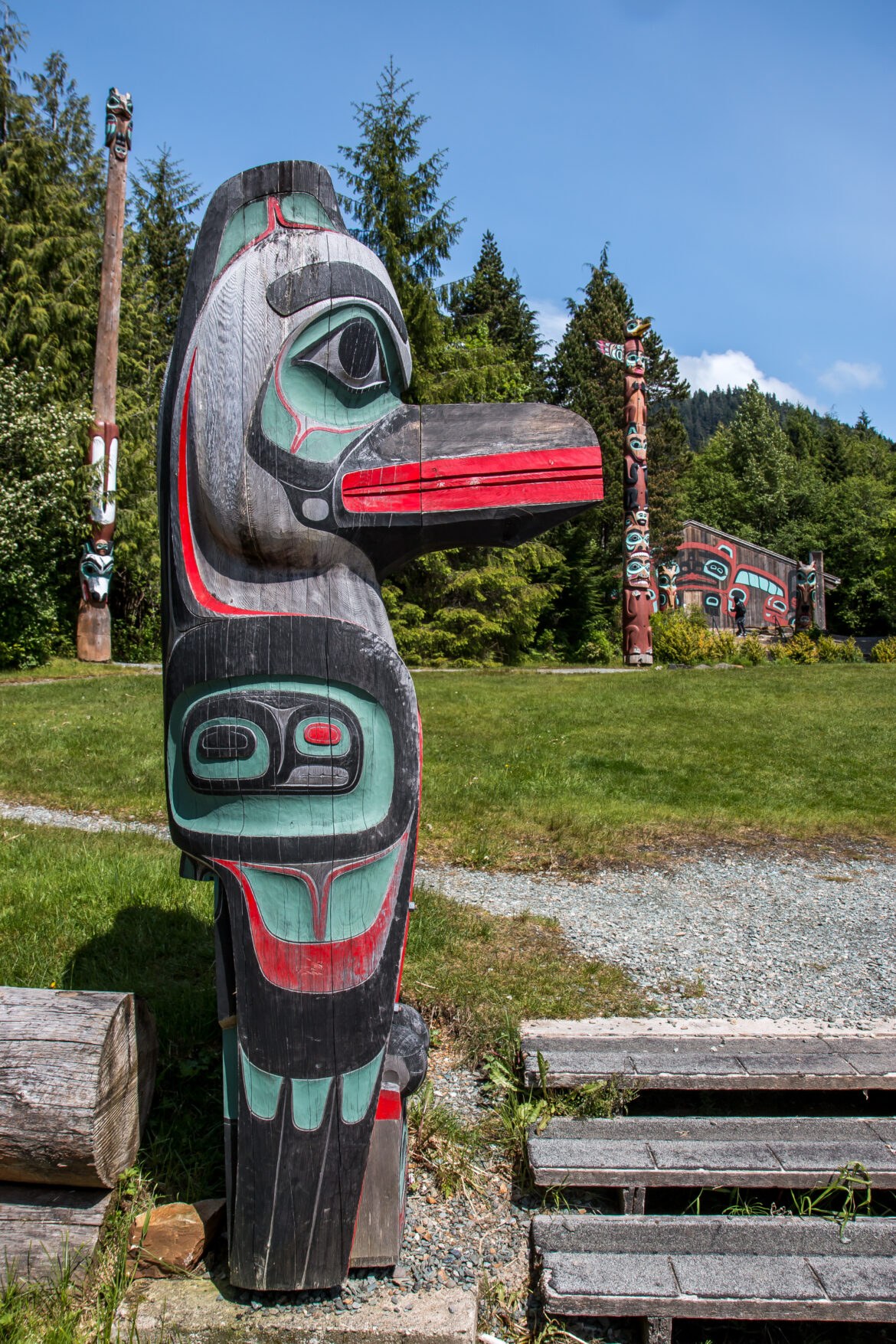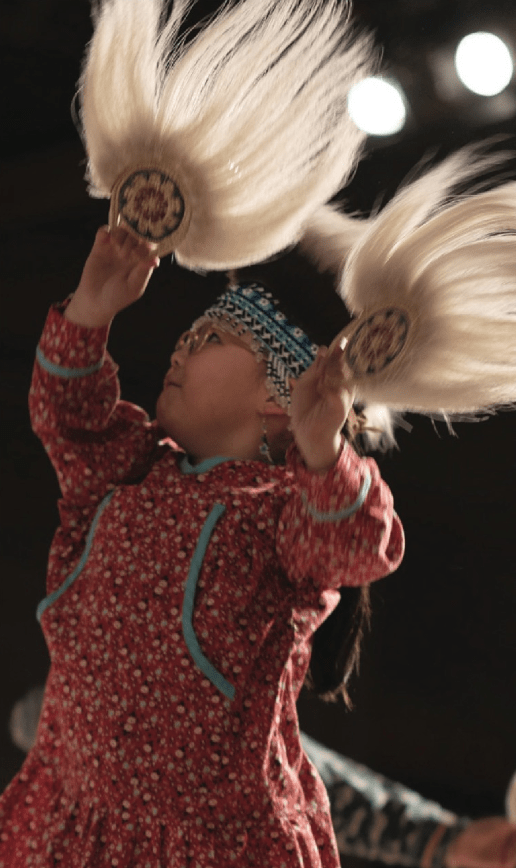Federal funding has long been crucial to Alaska’s economy, even before statehood. From the Alcan to the pipeline to our airports and beyond, it props up Alaska’s transportation and energy sectors, providing the infrastructure necessary to move people, fish, oil, and minerals. Federal programs have also long supported education, health care, research, and much more. In each case, a steady—and often overlooked—flow of federal dollars helps Alaskans afford the cost of life in the North.
Alaska is one of only a handful of states that celebrates Indigenous Peoples Day on the federal Columbus Day holiday. The state holiday was first created by annual proclamations in 2015 and 2016 by then Governor Bill Walker. In 2017, the Alaska legislature made the holiday permanent, and Walker signed the law while attending Utqiaġvik’s annual Nalukataq whaling festival.
Alaska has a legacy of bigger-than-life media personalities who ruled the presses like old-fashioned newspaper barons.
Above: The Dakhká Khwaán Dancers. Photo courtesy Simon Ager The Dakhká Khwáan Dancers from Whitehorse, Yukon, are the lead dance group at this month’s Celebration in Juneau, the region’s largest Alaska Native gathering. It’s the first time in the event’s 42-year history that the lead dancers hail from outside of southeast Alaska. “We are the first Interior Tlingit group to be given the honor,” says Marilyn Jensen-Yadułtin, the founder and leader of the group since 2007. “We are very humbled, honored, and excited.” As lead dancers, they will sing and drum as dozens of groups file onstage during Celebration’s opening and closing events. Jensen-Yadułtin says it takes “tremendous endurance,” as each performance requires three hours of non-stop singing and dancing. The group has practiced for months and will debut new regalia, songs, and masks. First formed in Carcross, Yukon, the Dakhká Khwáan Dancers have grown from six to 30 members…
DIGENEGH (MCGRATH) “Over on the Kuskokwim River” in Deg Xinag, the Athabascan language of Shageluk, Anvik, and the Athabascans at Holy Cross. Of about 275 Deg Hit’an people, approximately 40 speak the language. McGrath is featured in Luc Mehl’s story in this month’s Community section. (source: Deg Xinag Learners’ Dictionary) SUYITNA (SUSITNA RIVER) Dena’ina for “sandy river,” referring to the river’s silt and many sandbars. The river begins at the Susitna Glacier in the Alaska Range and runs 313 miles to the ocean near Anchorage. It drains nearly 20,000 square miles, mostly within the Matanuska-Susitna Borough, home to this year’s Arctic Winter Games. Learn more about the games in this month’s Profile section by Tim Lydon. (source: Shem Pete’s Alaska) Above: Sandbars in the Susitna River as seen from the Denali Highway. Courtesy Bo Mertz
Kyle Worl is an athlete and coach competing in the arctic sports category of this month’s Arctic Winter Games, being held in the Mat-Su valley. The arctic sports events, which originated over many generations in Indigenous communities across the circumpolar north, are a high- light of the games. They include the two-foot high kick, knuckle hop, and other sports linked to Indigenous hunting skills. The Arctic Winter Games also host com- petitions in hockey, skiing, skating, and other sports.
In Yup’ik culture, “Cama-i!” is a welcome greeting often accompanied by a handshake. It’s also the spirit behind the annual Cama-i Dance Festival, a three-day event held in Bethel and sponsored by the Southwest Alaska Arts Group. Visit www.swaagak.org for this year’s detailed schedule. The longstanding festival features Yup’ik dance, arts, crafts, seminars, a qaspeq fashion show, and public honors for local culture bearers. It has attracted 4,000 people and 20 Alaskan and international dance groups. This year’s theme is Yuraq Paiciutekaput – Dance is Our Legacy. Alaska Airlines offers a 7% discount code ECMK252 for people traveling to the festival (some exclusions apply). The event relies on volunteer support, and anyone wishing to volunteer can contact Laura Ellsworth at lbellsworth@alaska.edu. This year’s festival is dedicated to the memories of Seliksuyar Bob Aloysius of Bethel and Inuguarpak Stanley Anthony of Nightmute. And it honors culture bearers Ap’alluk Levi Hoover of Kasigluk and Atrilnguq Joseph Asuluk Sr. of Toksook Bay. Photo credit: Wáats’asdiyei Joe Yates
Chef Amy Foote and the Traditional Foods Program of Alaska Native Medical Center As executive chef at the Alaska Native Medical Center in Anchorage, Amy Foote is determined to provide the hospital’s Alaska Native and American Indian patients with traditional foods that are both healthy and culturally meaningful, which Foote says can aid healing. Foote’s kitchen provides 5,000 meals a day to inpatients, outpatients, and visitors at the campus hotel. “Our traditional foods program accepts donations, but we also collaborate to see what can be hunted, fished, gathered, or grown. We have Alaska Native-raised reindeer, wild-caught salmon, and seal donated by Alaska Native hunters. I also work with farms and Alaska Pacific University to grow traditional plants, including hydroponically, so we can get the foods that really heal and comfort our patients. I love my job. It requires building partnerships and sometimes getting people to think differently, like when we…
Alaska Native Historian Holly Guise on the Value of Oral Histories Alaska Native historian Holly Miowak Guise (Iñupiaq) reflects on how recorded oral accounts connect Alaskans and incorporate Indigenous voices into today’s historical narratives. “Oral history is a powerful way to reach students, academics, and the public, enabling listeners to connect with a speaker, hear about their life, and perhaps more readily empathize with them. It’s also important for integrating Indigenous perspectives missing from Western archives. Oral histories are meant to be listened to. Even when a transcript is available, it’s best to listen to the audio, which offers human voice, character, intonation, and the interactions between the interviewer and interviewee. Today, websites or YouTube channels allow people to hear oral histories from their homes or classrooms. I created a website, ww2alaska.com, during a postdoctoral year at the University of California Irvine that hosts testimonies from Unangax̂ survivors of relocation…
Kevin Johnson of Ketchikan Native Tours Kevin Johnson loves his hometown. He and his wife, Melissa, own and operate Ketchikan Native Tours, which offers hiking, sightseeing, and more, all while sharing insight into southeast Alaska’s Indigenous cultures. “We love sharing our Alaska Native heritage and our connection to the land and ocean. We’re Ketchikanites too, so we know all the little intricacies of our beautiful community. Ketchikan has a tremendous Indigenous history with our Tlingit, Haida, and Tsimshian people, and our Aleut community and World War II internment camp history. There’s Norwegian influence, too. So we have this diversity of art, religion, and industries. It’s fascinating how it all forms the community of Kichxáan, as the original Tlingit inhabitants called Ketchikan. One of my favorite spots is Totem Bight State Historical Park. It’s a collection of restored totem poles from neighboring villages and it sits right on the water with…










